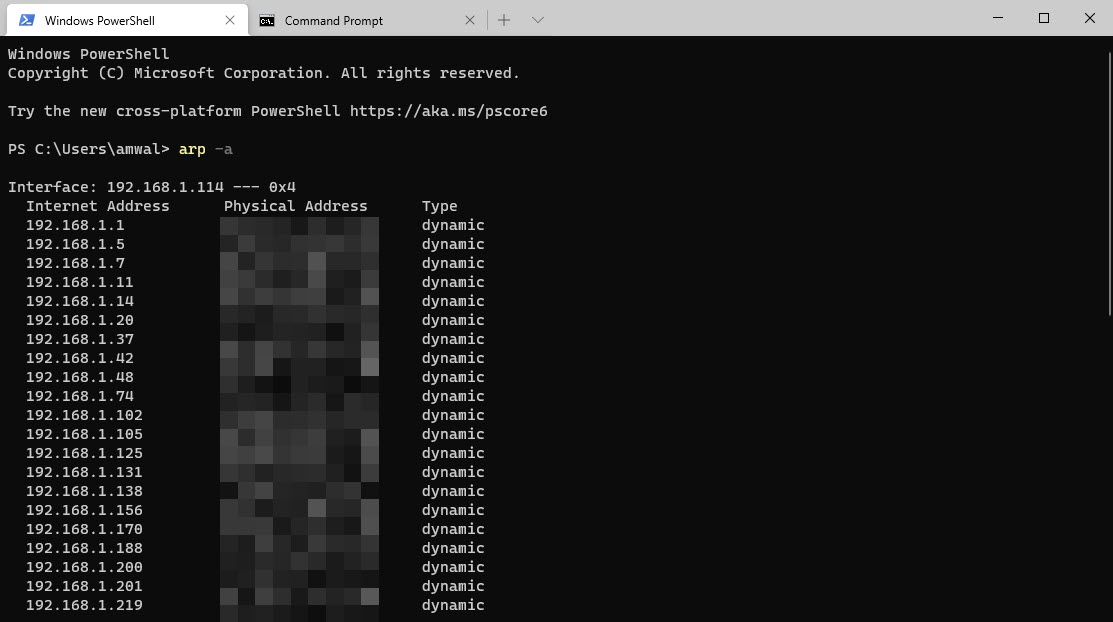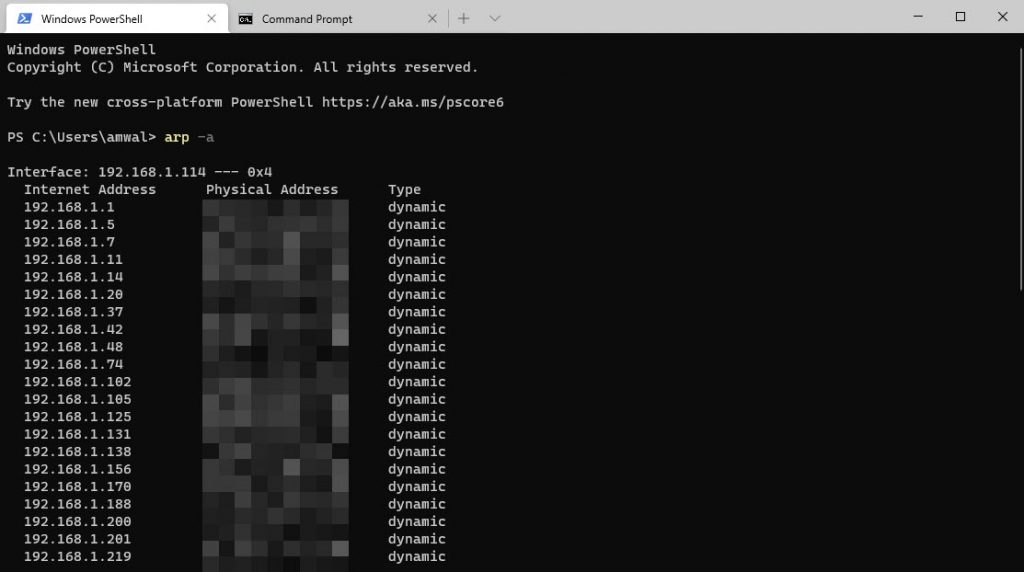
This is a great question. The latest list (when this was written) is:
- Arp – Displays and modifies entries in the Address Resolution Protocol (ARP) cache, which contains one or more tables that are used to store IP addresses and their resolved Ethernet or Token Ring physical addresses. There is a separate table for each Ethernet or Token Ring network adapter installed on your computer. Used without parameters, arp displays help. You can read more about ARP here.
- Nslookup – Displays information that you can use to diagnose Domain Name System (DNS) infrastructure (see this in depth look at DNS). Before using this tool, you should be familiar with how DNS works. The Nslookup command-line tool is available only if you have installed the TCP/IP protocol.
- Finger – Displays information about a user or users on a specified remote computer (typically a computer running UNIX) that is running the Finger service or daemon. The remote computer specifies the format and output of the user information display. Used without parameters, finger displays help.
- Ping – Verifies IP-level connectivity to another TCP/IP computer by sending Internet Control Message Protocol (ICMP) Echo Request messages. The receipt of corresponding Echo Reply messages are displayed, along with round-trip times. Ping is the primary TCP/IP command used to troubleshoot connectivity, reachability, and name resolution. Used without parameters, ping displays help.
- Ftp – Transfers files to and from a computer running a File Transfer Protocol (FTP) server service such as Internet Information Services. Ftp can be used interactively or in batch mode by processing ASCII text files.
- Rcp – Copies files between a Windows XP computer (does not work in Windows 7) and a system running rshd, the remote shell service (daemon). Windows XP and Windows 2000 do not provide rshd service. Used without parameters, rcp displays help.
- Hostname – Displays the host name portion of the full computer name of the computer.
- Rexec – Runs commands on remote computers running the Rexec service (daemon). The rexec command authenticates the user name on the remote computer before executing the specified command. Windows XP and Windows 2000 do not provide the Rexec service. Used without parameters, rexec displays help.
- Ipconfig – Displays all current TCP/IP network configuration values and refreshes Dynamic Host Configuration Protocol (DHCP) and Domain Name System (DNS) settings. Used without parameters, ipconfig displays the IP address, subnet mask, and default gateway for all adapters.
- Route – Displays and modifies the entries in the local IP routing table. Used without parameters, route displays help.
- Lpq – Displays the status of a print queue on a computer running Line Printer Daemon (LPD). Used without parameters, lpq displays command-line help for the lpq command.
- Rsh – Runs commands on remote computers running the RSH service or daemon. Windows XP and Windows 2000 do not provide an RSH service. An RSH service called Rshsvc.exe is provided with the Windows 2000 Server Resource Kit. Used without parameters, rsh displays help.
- Lpr – Sends a file to a computer running Line Printer Daemon (LPD) in preparation for printing. Used without parameters, lpr displays command-line help for the lpr command.
- Tftp – Transfers files to and from a remote computer, typically a computer running UNIX, that is running the Trivial File Transfer Protocol (TFTP) service or daemon. Used without parameters, tftp displays help.
- Nbtstat – Displays NetBIOS over TCP/IP (NetBT) protocol statistics, NetBIOS name tables for both the local computer and remote computers, and the NetBIOS name cache. Nbtstat allows a refresh of the NetBIOS name cache and the names registered with Windows Internet Name Service (WINS). Used without parameters, nbtstat displays help.
- Tracert – Determines the path taken to a destination by sending Internet Control Message Protocol (ICMP) Echo Request messages to the destination with incrementally increasing Time to Live (TTL) field values. The path displayed is the list of near-side router interfaces of the routers in the path between a source host and a destination. The near-side interface is the interface of the router that is closest to the sending host. Tracert determines the path taken to a destination by sending Internet Control Message Protocol (ICMP) Echo Request messages to the destination with incrementally increasing Time to Live (TTL) field values. The path displayed is the list of near-side router interfaces of the routers in the path between a source host and a destination. The near-side interface is the interface of the router that is closest to the sending host in the path. Used without parameters, tracert displays help.o the sending host in the path. Used without parameters, tracert displays help.
- Netstat – Displays active TCP connections, ports on which the computer is listening, Ethernet statistics, the IP routing table, IPv4 statistics (for the IP, ICMP, TCP, and UDP protocols), and IPv6 statistics (for the IPv6, ICMPv6, TCP over IPv6, and UDP over IPv6 protocols). Used without parameters, netstat displays active TCP connections.
We are adding articles on each of the available functions listed above. You will find links to these articles as they become available.
I hope you find this article and its content helpful. Comments are welcomed below. If you would like to see more articles like this, please support us by clicking the patron link where you will receive free bonus access to courses and more, or simply buying us a cup of coffee!, and all comments are welcome!

